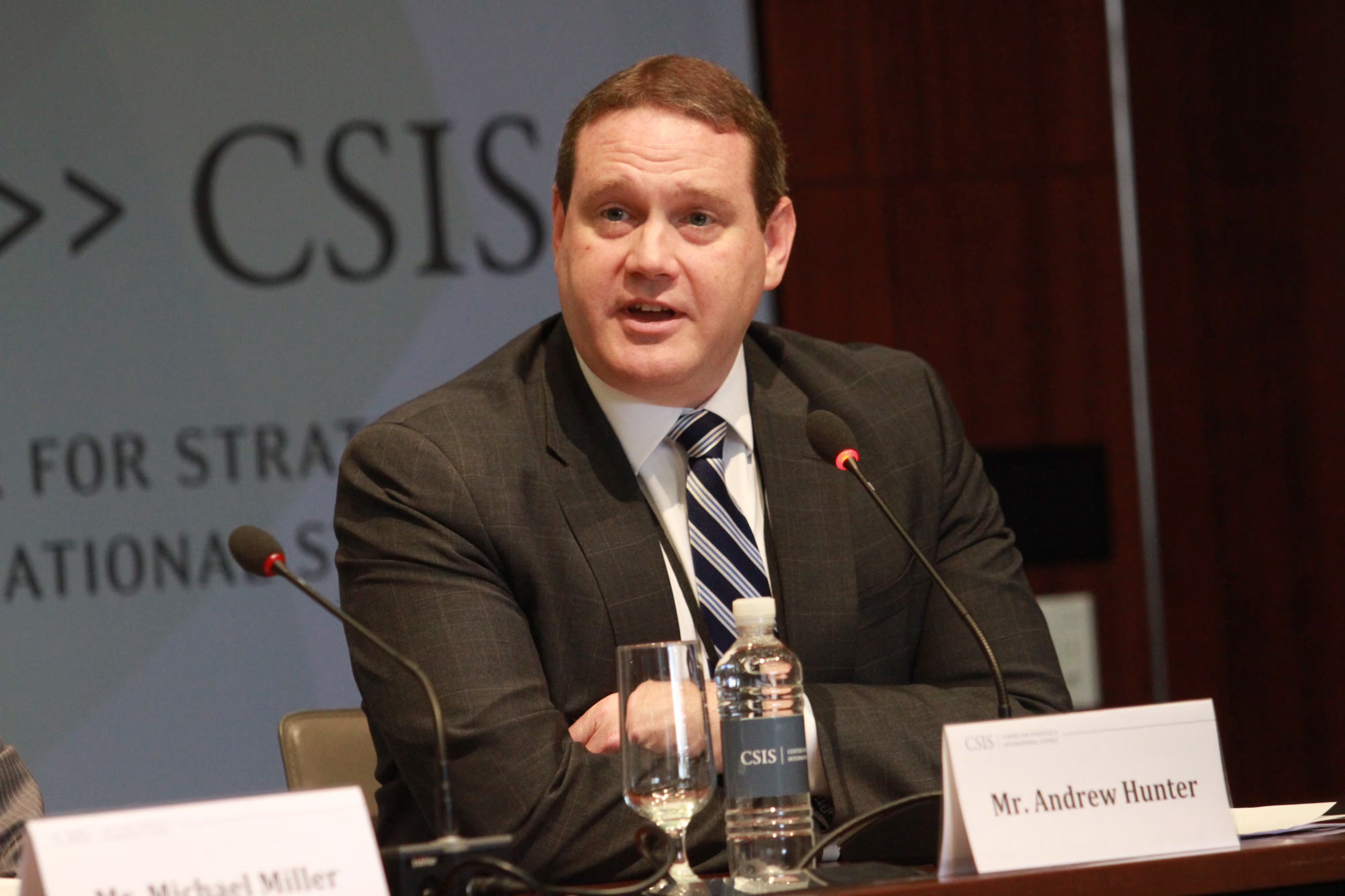WASHINGTON — Two months into his new job as the Air Force’s acquisition chief, Andrew Hunter has no shortage of challenges on his plate.
The COVID-19 pandemic and war in Ukraine have stretched vital supply chains to their breaking point. The Air Force is arguing with a key contractor over a program that continues to be delayed. And the service is facing tight timelines as it works to develop and field new capabilities in time for a potential major war.
In a roundtable with reporters at the Pentagon June 24, Hunter said the COVID-19 pandemic and the war in Ukraine have brought renewed attention to the importance of keeping supply chains flowing, particularly those involving chips, processors and the critical energetic materials needed for missiles and munitions such as the Javelin.
But one problem, Hunter said, is sometimes the defense industry can’t get the financial backing it needs to ramp up production of those necessary components or materials until the Pentagon hands out contracts. By that point, he said, “you’re always a little bit behind the power curve.”
Hunter said the Pentagon is trying to figure out how it can better give industry a more reliable “forecast” of what materials it will need in the future, so they can line up the necessary funding in advance from Wall Street.
And the defense industrial base needs to attract new and innovative companies that may not be traditional suppliers for the military, Hunter said.
One of the Air Force’s more ambitious recent programs has been to develop a series of autonomous drones that could serve as wingmen for manned fighters or other aircraft flying in combat. Hunter said the service is now trying to focus on moving beyond demonstrations and actually fielding something that could serve in this role, which the service is now referring to as collaborative combat aircraft.
There will still be a need for demonstrations in areas where the technology needs further refining, such as in swarming drones, Hunter said, and work on smaller drones that could be relatively expendable will continue. But for the most part, the service is going to concentrate its efforts toward delivering something that could be operationally deployed in time to fight the next potential war.
The timeline and acquisition strategy for fielding this program is still being worked out, Hunter said. But the Air Force would probably involve multiple contractors instead of a single prime, and take advantage of the growth in competition providing autonomy core systems in industry.
Hunter said the Air Force wants to have a drone wingman ready to use with the Next Generation Air Dominance program by the time it reaches initial operating capability, which it hopes to have reached by the end of this decade.
Hunter expressed confidence in Northrop Grumman’s B-21, which he said is on track to be unveiled to the public around the end of this year, with a subsequent first flight coming in 2023. While there were initially hopes the new stealth bomber’s first flight could come this year, he said the government expected the process to end up taking longer.
Testing will inevitably uncover issues with the plane that need to be fixed, he said, but those are normal parts of the process.
“I’m always mystified when we do a test and we find something, people say, ‘Oh my gosh, it’s terrible!’” Hunter said. “No, that’s why we do tests. We expect to find things.”
Hunter said the Pentagon has not yet set a revised schedule for Boeing to deliver its delayed replacement Air Force Ones, but he still expects it to be about two or three years late, as he told lawmakers last month.
It’s in Boeing’s interest to finish the VC-25B job as fast as possible, Hunter said, because it is under a fixed-price contract.
“Every additional day they don’t deliver the airplane, it costs them more, and they’re losing money,” Hunter said.
But in what Hunter called a “problematic incentive,” Boeing has also challenged some of the Air Force’s requirements for the planes by saying they’re not explicitly spelled out in the contract. At that point, he said, Boeing tries to get the Air Force to pay extra for those requirements.
“If the Air Force comes and says, ‘What we really need the airplane to do is this,’ Boeing says, ‘Well, you know, our written contract doesn’t use those exact words.’ So you get this dynamic where they become very focused on, we need to finish. … Anything that appears to us to be in any way, shape or form, not 100% required explicitly in the contract is an extra bill.”
But he acknowledged Boeing and the Air Force have had some difficulty with the program, particularly in getting the information needed to finalize the contracts.
“We can always haggle over price, but we shouldn’t be at a loss because we just can’t get the right data,” including cost data, Hunter said.
The Air Force is seeing some improvement from Boeing recently, Hunter said, and he’s “reasonably confident” they’ll be able to work through those problems.
And the Air Force is watching the corporate unrest at Aerojet Rocketdyne following its failed acquisition by Lockheed Martin and open conflict between the company’s executive chairman and chief executive. Aerojet last month reprimanded its chairman, Warren Lichtenstein, over his attempts to oust CEO Eileen Drake and comments he made about the now-scuttled merger.
Aerojet is a key supplier of solid rocket motors used by the Air Force.
“The government is still kind of waiting to see what is their plan, corporately?” Hunter said. “And then we’ll have an opportunity to assess and say, is that really going to meet our needs?”
Stephen Losey is the air warfare reporter for Defense News. He previously covered leadership and personnel issues at Air Force Times, and the Pentagon, special operations and air warfare at Military.com. He has traveled to the Middle East to cover U.S. Air Force operations.








